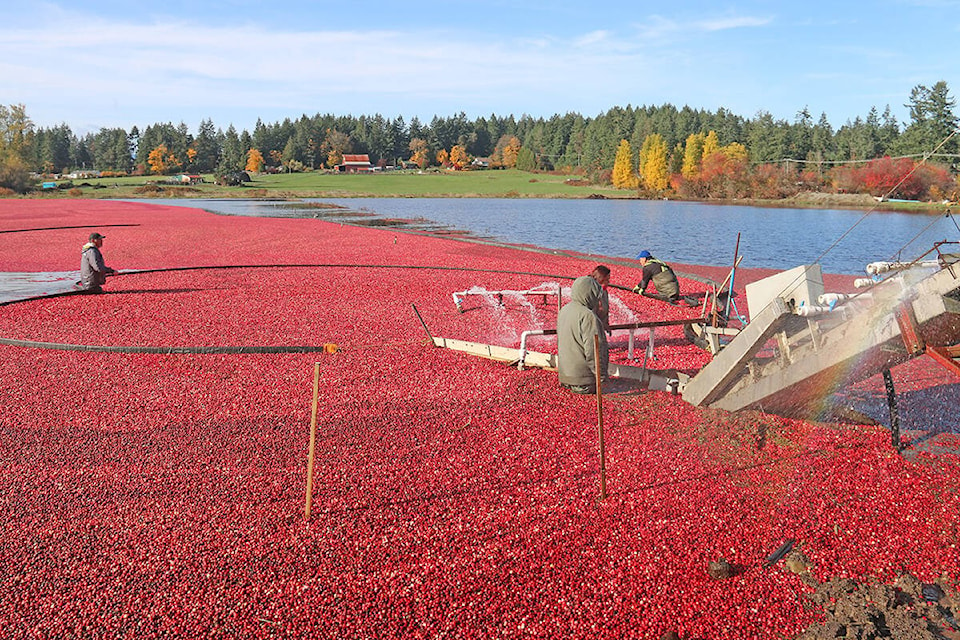BY DUCK PATERSON
Hundreds of thousands of pounds of cranberries makes for a lot of turkey dinners. That’s what Grant Keefer is harvesting at the fields at Yellow Point Cranberries this season, he said – anywhere from 175-275 thousand pounds.
“We are currently renovating fields as we have some acreage out of production,” he said, “so output is somewhat down from normal.”
The Keefers moved to Yellow Point in 2001, planted their future in 2002-05, and are now renovating and replanting with newer varieties. Central Vancouver Island is a great location for growing cranberries, they say, and the farm on Yellow Point Road is a fairly large producer. About six and a half hectares were used for growing this season, with another two and a half in various states of replanting and regrowth.
Cranberry plants send out runners, re-rooting and spreading within the canopy. Keefer said there is not a set number of plants, but rather a complex ground-cover growing system. Older varieties produce anywhere from 10-15,000 pounds per acre and newer varieties can produce anywhere from 30-50,000 pounds per acre.
“We would hopefully like to see some of those higher yields eventually,” he said.
Growing cranberries is not an immediate crop, according to Keefer.
“If we are lucky, we may see a bit of fruit in year three, but realistically, it’s five years plus to start getting consistent production,” he said.
According to Keefer, the most common variety of cranberries being grown is called Stevens, which has been around since the 1950s.
“We have some good Stevens still and will keep them in production for a while. The poorer-producing fields we are replacing with new varieties which have only been available for the past 10-15 years,” he said.
The newer varieties have some different characteristics, beyond yield, which make them beneficial for replanting, most notably early darkening, which is a plus for Canadian Thanksgiving, and the berries have greater firmness.
The fields aren’t flooded for fresh fruit, Keefer said – those berries are picked with a dry harvester in September and early October, and packaged and sold at the farm and in stores. Flooding the fields helps with the harvest of berries for processing, the more common use for cranberries, into juice, sauce and dried fruit. A day after the start of the flooding, farm machines ‘beat’ the fruit off the vines. The plants are just barely submerged for the beating process, then the water level is raised the next day so the berries float up and out.
After the harvest, the plants go into dormancy. They can be under water for an extended period of time in the late fall and winter, but Yellow Point Cranberries prefers to have them under water for only about a week at harvest time.
At their farm location, the Keefers also have a small production facility and a store that’s open seven days a week. Yellow Point Cranberries also sells products to retail outlets from Victoria to Port Alberni.
The cranberries for processing all go to the Ocean Spray cranberry cooperative where all the cranberry growers are the owners. There are 800 growers in North America with 80 of the farms located in B.C.
Keefer said the farm employs four to six people working part-time, depending on the time of year and the type of jobs that need doing, but at its heart, it’s a family business.
“Yes, I even had my 13-year-old out pulling booms of berries with the neighbourhood kids and our regular crew,” he said.
READ ALSO: Cranberries a booming business at harvest time near Nanaimo
